First Drive: 2026 Aston Martin Vanquish Volante Delivers Open-Air V12 Ferocity
Few drives spark anticipation like this one: The 2026 Aston Martin Vanquish is the fastest and most powerful front engine production machine on sale today – eclipsing Ferrari’s 12Cilindri by a fistful of horsepower – and the Volante I’ve got my hands on is the drop-dead gorgeous soft-top version that becomes available in the second half of 2025. It promises more than just open-air elegance – it also delivers epic firepower.
It looks quick while standing still outside Aston Martin’s Q New York flagship U.S. showroom, svelte Satin Aluminite Silver colors shimmering as the summer sun peeks around the surrounding skyscrapers, quickly reverting to matte gray when a cloud steals its light source. The Vanquish is the fourth ‘showroom revolution’ model that’s been launched by Aston Martin in the last 18 months, following on from the Vantage, DB12 and the DBX707 (coupled with the sporty S sibling – its top-end super SUV). But they’re all V8s – and the Vanquish’s V12, a completely new engine design that’s hand-built in the UK, actually predates them all with its five-year gestation period.
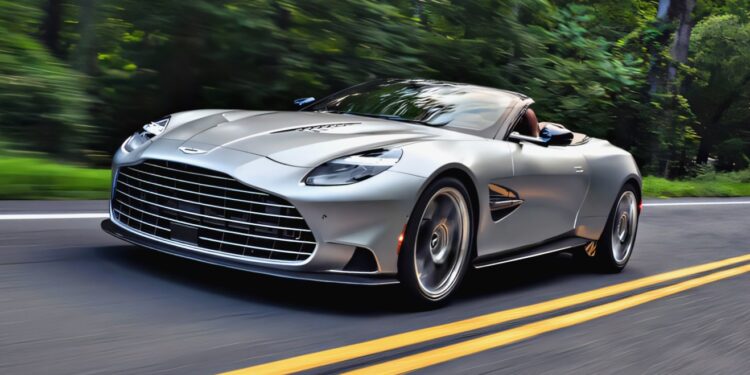
“It is all about this engine; it really does quite define the driving experience,” explains Simon Newton, Vehicle Attribute & Performance Director, before our drive. “Aston recognized that they wanted to continue with the V12 legacy and, as such, had to put a lot of time and effort into producing a unit which is significantly up in terms of power and torque, as well as meeting the latest emissions standards.”
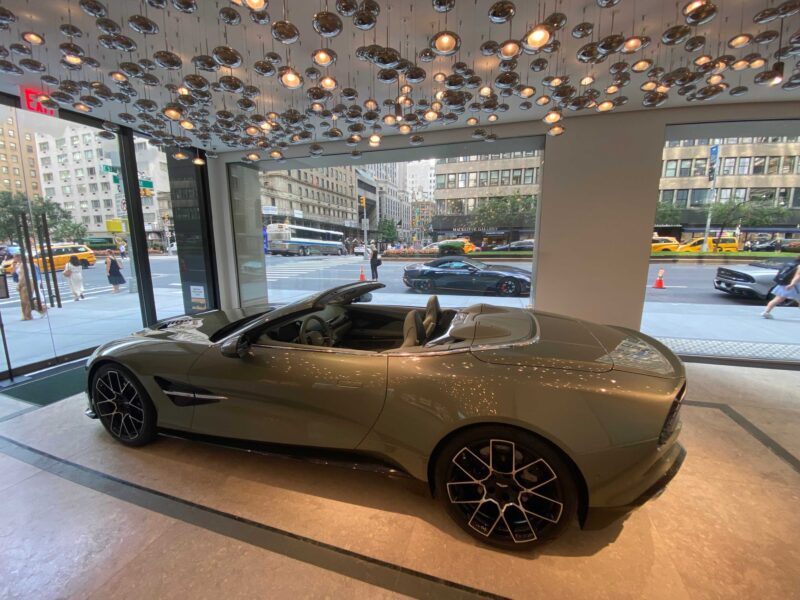
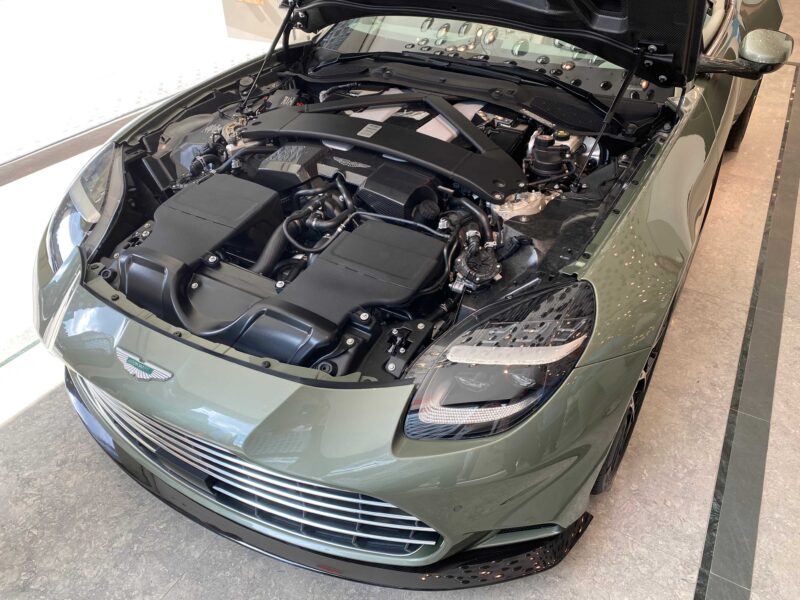
In fact, it’s been 25 years since Aston Martin first launched V12-powered Coupe and Volante models, with 2000’s DB7 Vantage. Back then, you got a 5.9-liter engine, producing 420 horsepower and 400 lb-ft of torque, and a top speed ‘nearing’ 186 mph. Today, it’s the third-generation range-topping Vanquish that boasts a fresh 5.2-liter V12, flanked by twin-turbos, producing 824 hp (yes, that’s almost twice the power) and 738 lb-ft of torque (338 more). With a 0-62 mph time of 3.4 seconds, it’s one metric that is slightly inferior to the 12Cilindri, presumably due to the Vanquish’s turbo lag.
This V12 develops maximum torque at just 2500rpm – precisely half the engine speed required by its forebear of 25 years ago – and maintains that 1000Nm peak all the way from 2500-5000rpm, until reaching its maximum speed of 214 mph. Despite modern safety demands, the 2026 version has only added 95kg, increasing its power-to-weight ratio from 313hp per tonne to a staggering 416hp per tonne.
The performance stats are impressive, but the design tells its own story: Two vein-like carbon-fibre vents sit atop the hood, with F1-inspired fluting venting hot air from a hungry engine fed by that full-width grille that dominates the head-on aspect. While I’m not a huge fan of gaping maws, the design from the tip of its nose then flows satisfyingly throughout, all beginning with the elegantly expansive front end; the aesthetic truly emphasizes the car’s assertive proportions.
“The length of the hood is part of the drama of Vanquish; it’s really accentuating the wheelbase, that dash-to-axle area, showing the power and grace of the car,” says Marek Reichman, EVP & Chief Creative Officer. “The shark nose emphasizes the length to the windshield base, and the proportion that the car has, with the front wheels pushed forward, gives an assertive, almost aggressive stance.”
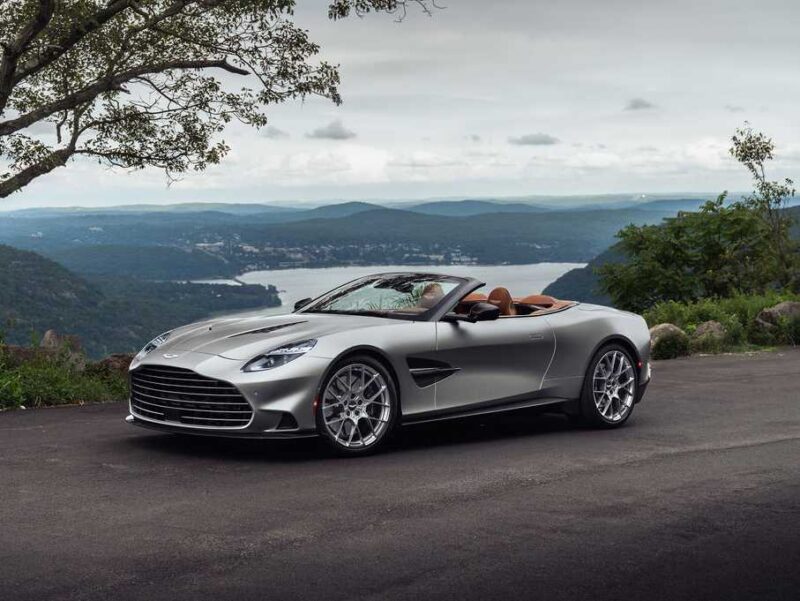
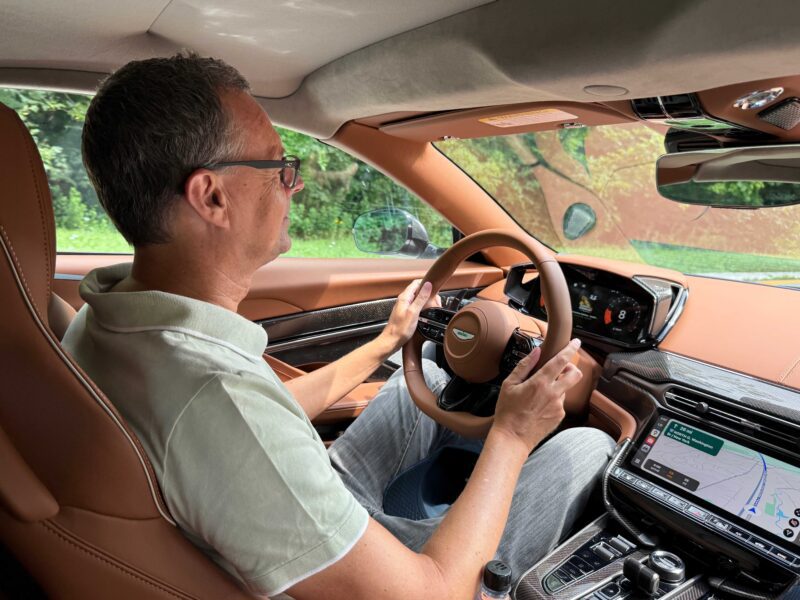
With those extra four cylinders adding chassis heft behind the front wheels, the design messaging is reinforced by a triangular carbon fiber side strake, reminiscent of the DBR1 racer, which carries the ‘ASTON MARTIN V12’ moniker, and probably explains why an NYC traffic officer saunters up as I crawl through the morning traffic: “This the V12, right?” he asks, the first of many people to do likewise, or give the thumbs up. This car is already bringing joy to the masses, and I haven’t even got to the best bit yet!
After escaping the city’s stranglehold, it’s time for the Vanquish to finally bring the power. And how. When it’s in regular GT driving mode, it loves to quietly saunter up to eighth gear – let’s say in true grand tourer fashion. But engage Sport mode, or the completely manic track-inspired Sport +, and rattle down to the lower gears, the Jekyll-and-Hyde transformation begins with a stab of the throttle pedal on the open highway. After a short lag, those twin turbos kick in too, which sends your heart racing even further. Make no mistake, this car is insanely fast. Suddenly, the Vanquish is less luxury tourer and more ballistic missile.
Even better, with no electric motors, no complex hybrid system, just a barking V12 ICE motor that sings its glorious song, harmonized by the turbos and echoed by a titanium exhaust, this feels like pure performance from a proper old school powerplant, the rear wheels alone are fed by an eight-speed ZF automatic gearbox located within the rear axle for optimal weight distribution.
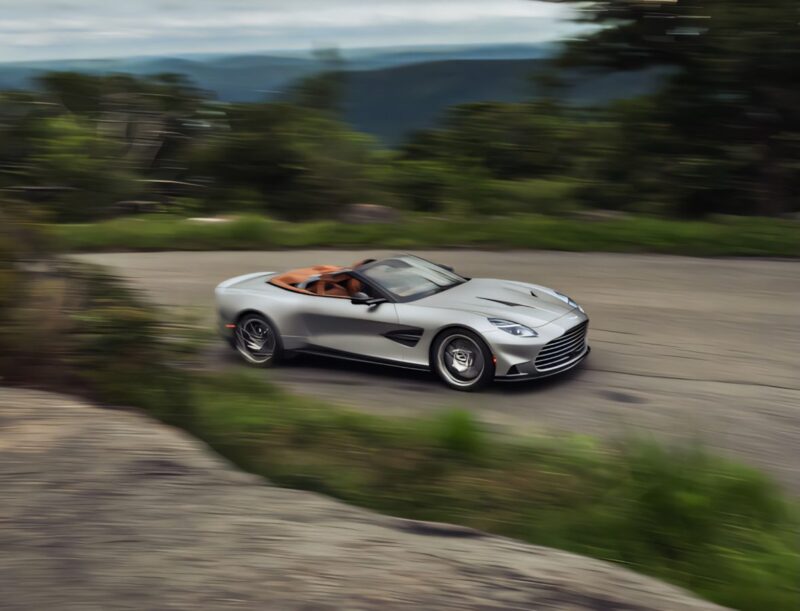
Power is nothing without control: The Vanquish Volante incorporates the same rear E-differential used by its sibling Vanquish Coupe. Capable of transitioning from fully open to 100% locked in 135 milliseconds, the E-diff provides incredible bandwidth and benefit – which is starkly apparent when I transition to a country road from the highway. Coupled with Electronic Stability Programme (ESP) technology, it aims to ‘shorten’ the wheelbase in tighter corners by giving it rotational response to steering input. The ESP also offered Track and Wet modes; today I require neither.
On the bumps and gravel strewn surfaces, attempting full throttle means that its traction control intervenes assertively – but once you learn its rhythm, the power is progressive, and quite intoxicating. With a little right-footed finesse and forethought, all those horses remain on tap, giving you a pure beaming grin of a driving experience, just knowing that the Vanquish can leap into hyperspace mode whenever you desire.
It just wants you to do that on its terms; I did feel the tiniest hint of wheelspin in third gear while playing with throttle demands, so you still must be careful. Lean on the throttle steadily, and the revs and speedo rattle upwards almost ridiculously fast. Completely stamp on it and… well, I’d imagine a fully prepared drag racing strip would be an absolute hoot, especially with its “Boost Reserve” device engaged! On a twisting road, working progressively with the power makes driving the Volante a compelling experience. Drive like a rock ape, and I’d imagine it would eventually bite you back.
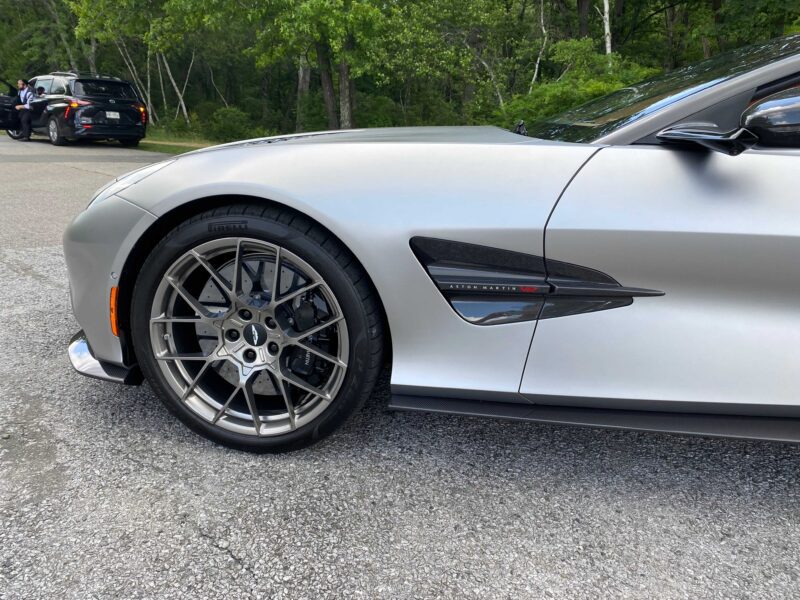
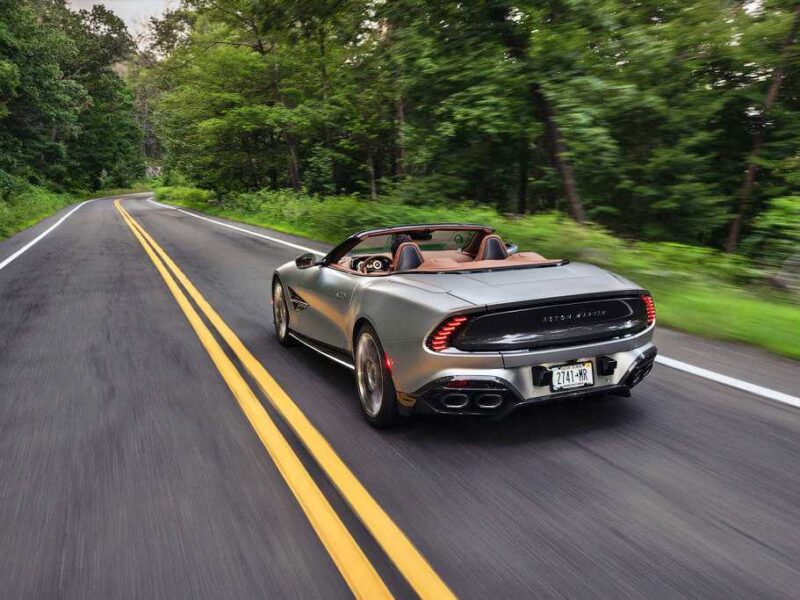
In terms of ride, the Volante feels firm yet not bone shaking. But as soon as you explore the power on offer, you realize this car requires a solid platform from which to connect with the road – to harness all that power. Handling-wise, our meandering country backroad route that took in Lake Welch, the road around Harriman State Park and eventually up to Valley Rock Inn & Mountain Club, provided challenging corners, many with blind crests – and the odd startled deer – and, at one point, a Police car completely blocking the road! The Vanquish’s carbon ceramic brake system came into its own at that point, as we followed his unexpected diversion into what felt like the middle of nowhere…
The Volante’s 50/50 weight distribution (actually superior to the Coupe’s 51/49) is aided by the location of the retractable roof, its mechanism and the safety roll bars between the rear wheels. Extra carbon fiber bracing and stiffer front anti-rollbars, plus Bilstein DTX dampers, means there’s no float that you might expect from a convertible. I found that I had to drive it really badly into a hairpin, charging the corner, to unstick the front end, but it quickly responded with grace and helped me out with the minimum of fuss.
The steering felt a tad heavy to begin with, but from that initial turn-in, your inputs can be feather-light as it smoothly gobbles up bends, giving good feedback and working especially well in tandem with trail braking into the apex, which helps if a corner suddenly creeps up on you or tightens unexpectedly. Despite its wide dimensions, it doesn’t feel like a big car on a country road or the highway – only in city traffic was I truly aware of how much of the lane the Vanquish was filling, especially when jostling for inches next to a bus or truck.
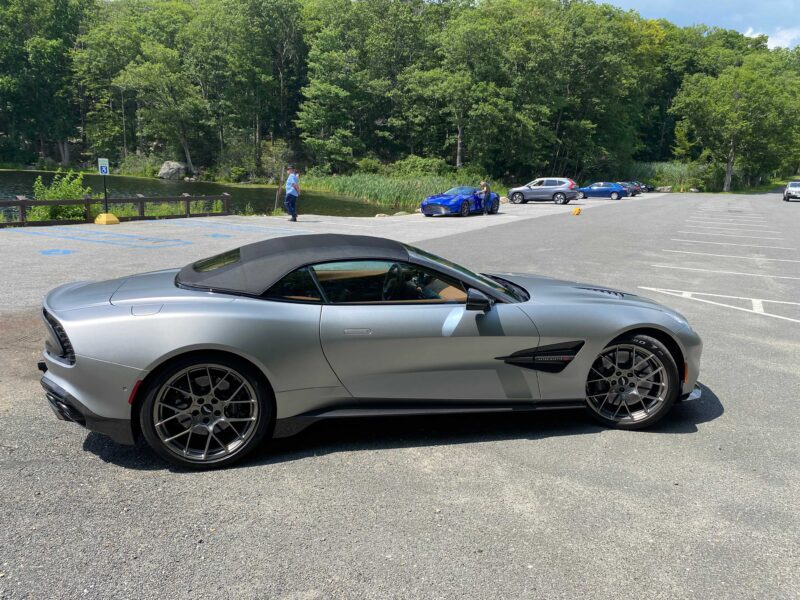
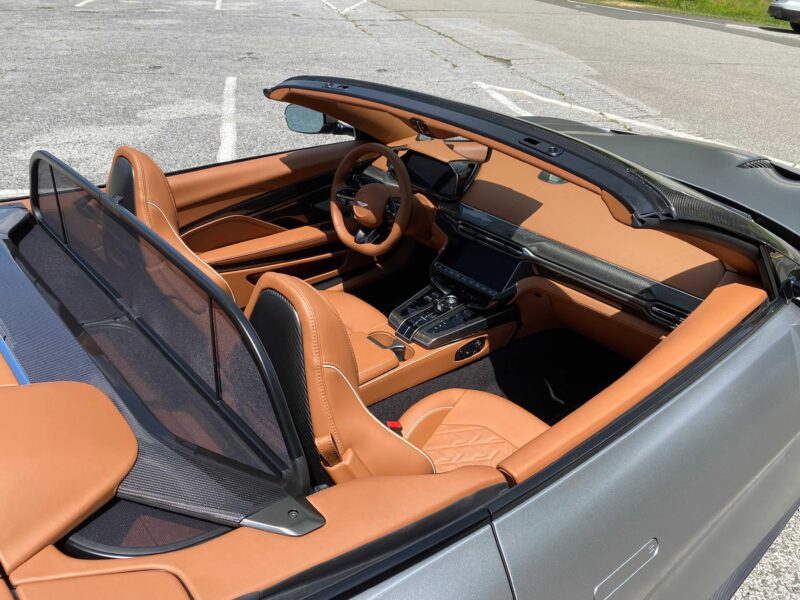
With rain showers threatening, the roof is raised for the return journey to New York City. The Volante sports an innovative K-fold roof, which can fold in 14 seconds and close in 16 at speeds of up to 31 mph, and the car still looks pretty with it in place. Due to its low height when stacked (260mm), this really doesn’t interrupt its flowing lines when it’s down either.
Two things do become apparent with the roof up: Somewhat surprisingly, the engine note resonates even more satisfyingly. With it stowed, wind noise certainly has some influence on the harmonics, although driving with the side windows up helped enormously for in-car conversation. And, secondly, one nitpick I have is that it would benefit from a rear-view camera screen, as the central mirror became slightly obscured by the soft-top’s rear window. I found myself favoring the large external mirrors, like an F1 driver – especially as they’re attached to long, carbon fiber stalks.
On a more leisurely drive back to Q, it was nice to take in the luxurious and airy cabin, which is a true two-seater, with swathes of tan leather, a low-slung driving position, and an amazing dashboard that’s shaped like an art sculpture; the Vanquish Volante truly is a symphony of British craftsmanship. The central console design features a mix of buttons and machined billet aluminum, with everything to hand with a nice touch and feel. It leads up to a 10.25” screen that features the convenience of Apple’s CarPlay Ultra system.
Aston Martin’s Q department also provides the potential for a dizzying range of colors, luxurious finishes and materials, both inside and out, made for customers to create unique configurations: “Whatever you desire, you can create – carbon infills, different leathers, you can even anodize the rotaries in different colors,” adds Reichman of the interior options.
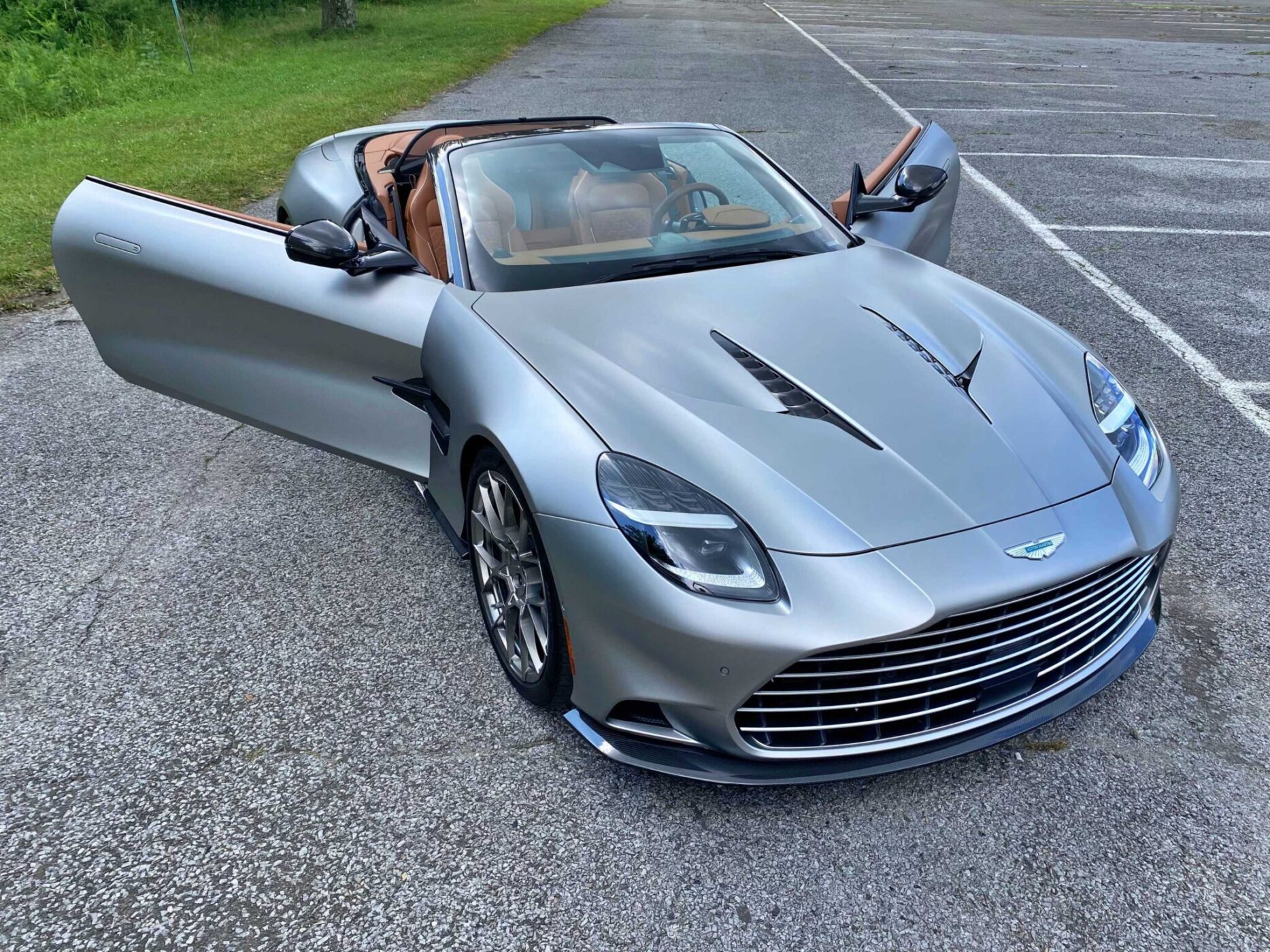
1 of 8

Of course, all the luxury and performance comes at a Bentley, Ferrari and Rolls-Royce rivaling cost. Suggested retail pricing for Vanquish Volante starts at $483,000, with the options-laden version I drove coming in at $595,300. But it’s a lot of car for a lot of money.
At one point it seemed that the Vanquish nameplate might never return, after its second-gen run ended in 2018, and there was even talk of it becoming a mid-engined supercar. The best news is that Aston Martin has chosen to retain front-engined Vanquish heritage, with a production run of 1,000 expected to be built over a calendar year, and about a third of those coming to the U.S.
Speed and performance metrics, backed up by its Formula 1 and endurance racing programs, now matters as much to Aston Martin as comfort and luxury – even for the drop-top version of this crown jewel. We should rejoice that it’s back; the Vanquish Volante is a ferociously handsome brute that makes the sports car world an infinitely better place.
View All Aston Martin Vanquish For Sale
Images Source: Aston Martin, Charles Bradley
Never Out To Pasture: Driving Vintage Lamborghinis In Emilia-Romagna
by Kyle Hyatt
in Features, Lamborghini News, Reviews
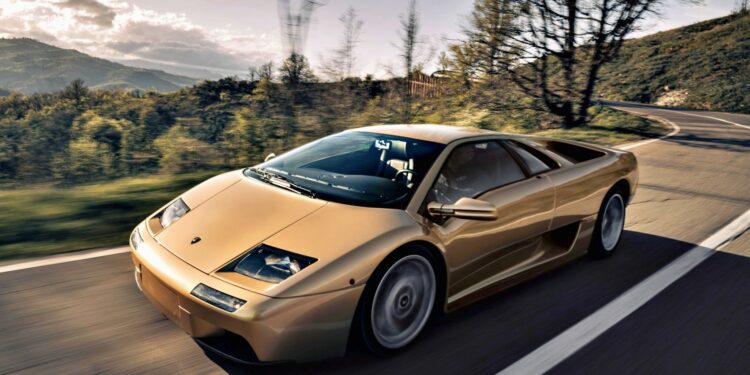
Driving classic cars can be a funny thing. Often going into it, one has a whole raft of preconceived notions about not only the car, but the marque and the era in which the car was made. For example, if you go to drive a ’69 Dodge Charger, you more than likely expect it to be loud, crude, and horrible in the corners and on the brakes. Those preconceived notions, though, can lead to some real surprises, as was the case in the hills outside Bologna, where we drove a pair of classic Lamborghinis.
Make no mistake, modern Lamborghinis – Gallardo, Huracan, Murcielago, Aventador – are largely fantastic to drive. They’ve got all the sound and fury you’d expect from the brand, but they’re usually as willing to do a commute as carve a canyon road. Classic Lamborghinis have a reputation for being unwilling to do either of those things, instead functioning more as loud, expensive devices to be seen in by others. This was what I expected when I contorted my 6-foot, 4-inch frame into the final production Diablo SE for the first time. It is not, however, what I got…
2001 Lamborghini Diablo 6.0 VT SE
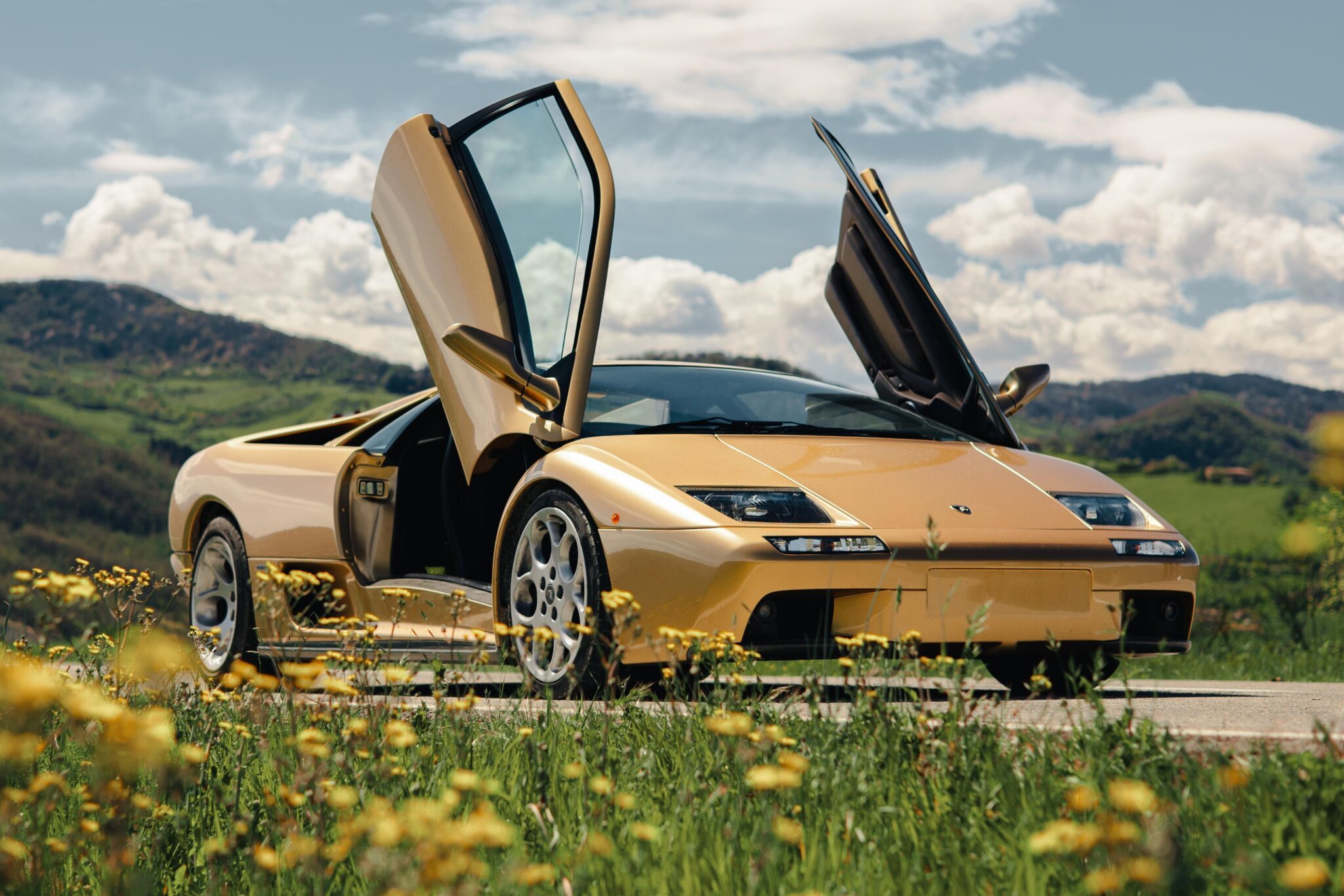
1 of 7

The 2001 Lamborghini Diablo 6.0 VT SE was conceived as a farewell to the model before the much more modern (and more Audi-fied) Murcielago debuted. It’s a best of the best of Diablo, with a 550-horsepower 6.0-liter V12 (the second most-powerful fitted to the model, behind the Diablo GT), VT all-wheel drive, and the Luc Donckerwolke-designed facelift bodywork, complete with its Nissan 300ZX headlights.
Lamborghini made 42 examples, available in either “Oro Elios” gold or “Marrone Eklipsis” which is sort of an oxblood with bronze flake in it. The final example, which has never left Lamborghini’s hands, is the former with a gorgeous dark brown leather interior.
The first surprising thing about the Diablo SE is how relatively roomy the passenger accommodations are. Headroom is short, but if you’re riding in the right seat, even at my size, there is a decent amount of legroom, and shoulder room is also nothing to sneeze at. As a driver, this is hampered by the steering wheel, naturally, but I was able to fit, if not comfortably, at least well enough to operate the vehicle without too much difficulty.
Speaking of operating, the basics of puttering around in the Diablo are also unexpectedly simple. The clutch, while heavy, is easy to modulate, and thanks to the big V12’s 457 pound-feet of torque, I didn’t manage to stall the car once. This is not true of the other cars I drove, but more on that later.
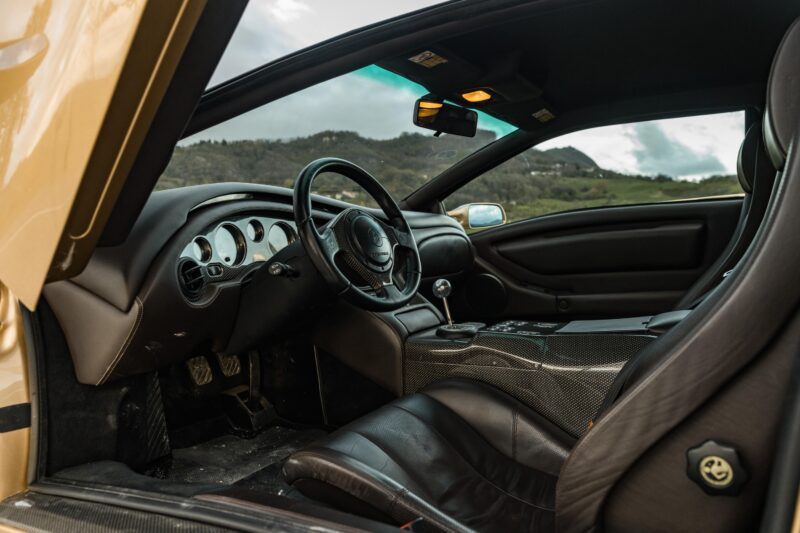
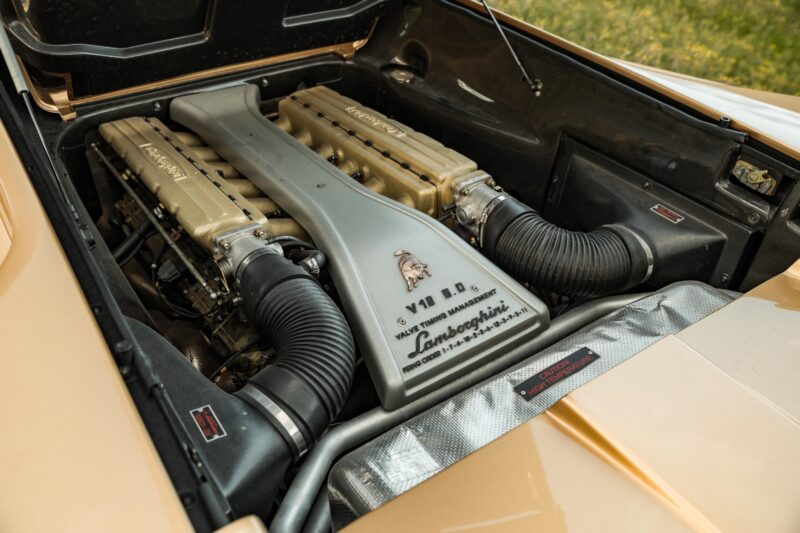
The gearbox is closer to what I expected it to be – stiff, and somewhat agricultural (insert tractor joke here) – but once warm, the effort required tapers off somewhat, and it becomes a direct, pleasurable thing to use. It’s somewhat odd that it’s only a five-speed, but with the engine’s grunt, five long gears feel like plenty.
That drivetrain, too, is incredible. There are some cars that seem to have been built around an engine, where, when you climb the rev counter, the engine seems to wake the entire car up and makes it feel alive. To paraphrase stock car driver Darrell Waltrip describing his 1970s Monte Carlo, the Diablo is “all ate up with motor.” There are a few reasons that Lamborghini stuck with this engine from 1963 until the Aventador: it’s brilliant.
Arguably, the biggest surprise about the Diablo is its steering. It’s power-assisted, but still very weighty and pleasantly direct. You’re not really fighting it as I’d expected I might have to in parking situations, and it gives the Diablo the flavor of being a bit of a driver’s car. It’s not what I’d call nimble, by any means, but on the curvy roads leading up to the Passo della Futa, it feels like a willing participant.
Other niceties for the SE include a distinctly usable front trunk space, working air conditioning (which was a blessing on a 90-plus-degree day with 85% humidity), reasonable visibility everywhere except directly behind you, and a firm but not harsh ride. The last one was even tested on a road under construction, i.e., a poorly finished gravel track. The car is also not so low to the ground that it has issues scraping anywhere. It feels borderline blasphemous to say this, but the Diablo seems to be a usable supercar.
View All Lamborghini Diablos For Sale
1967 Lamborghini 400 GT 2+2
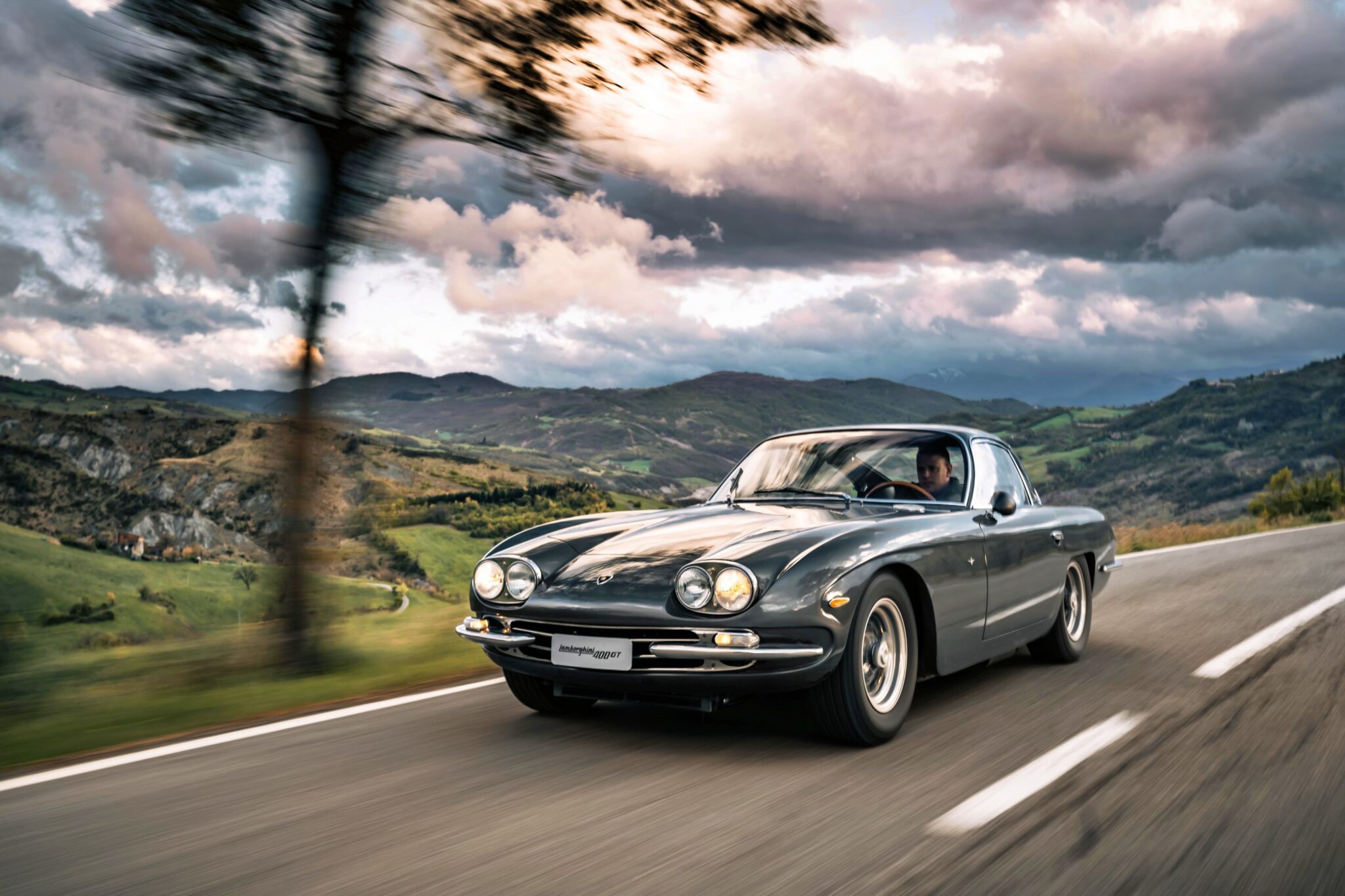
1 of 8

The Diablo isn’t the only car I drove during this experience, and the 400 GT 2+2 couldn’t be more different. It’s clear that not only was the 400 GT designed with a very different mission in mind, but that 40 years of development separate it from the Diablo SE.
Where the Diablo is meant to be an angry, rampaging bull of a car (see what I did there?), the 400 GT 2+2 is part of Ferruccio Lamborghini’s original vision to out-Ferrari Ferrari. It’s long, low, and beautifully proportioned. As a grand tourer, it’s softer, more elegant and spacious than the mid-engine cars that came later. It also has the most profoundly Italian driving position I’ve ever experienced.
When I say “Italian driving position,” what I mean is that the steering wheel is closer to your chest than seems prudent, and your legs are stretched way out in front of you. As I mentioned earlier, I’m 6 feet 4 inches tall, and with the seat adjusted so that I could work the wheel somewhat normally, I couldn’t push the clutch all the way to the floor. It’s not so bad once you get onto the autostrada, where the 400 GT is meant to thrive, but in any kind of traffic, it’s somewhat disconcerting.
Also disconcerting is the fact that the 3.9-liter version of the corporate V12 isn’t particularly torquey, so the car requires a lot more revs to get around at low speeds than you might expect, especially coming from a later model. Add in the fact that this particular 400 GT had something going on with its fueling at low speed, that caused it to bog down and not rev under load, and I’m not ashamed to say that hill-starting this car was terrifying. Having the final Countach to ever roll out of Sant’Agata right behind me didn’t make it any better.
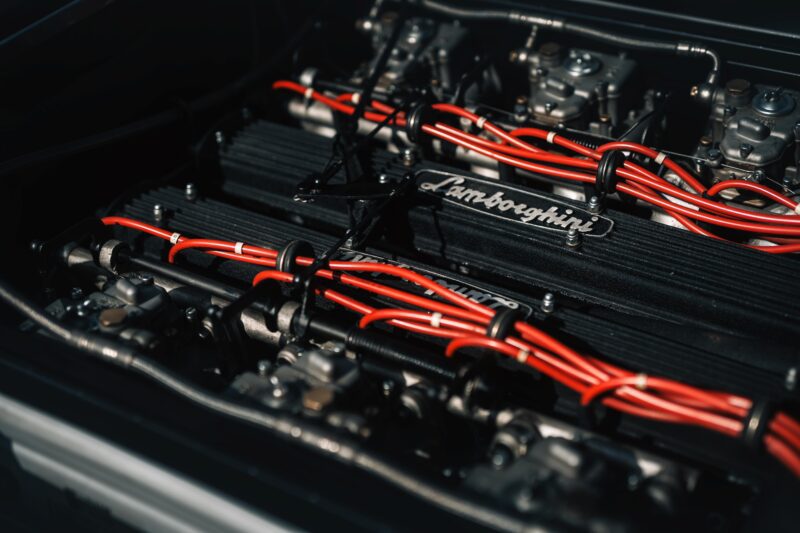
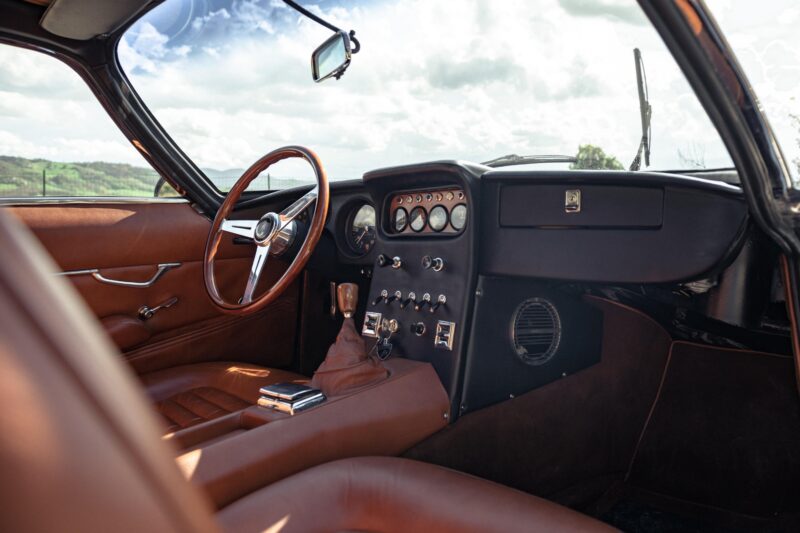
The issue with the car’s six Weber carbs notwithstanding, the 400 GT is a beautiful thing to drive once it’s allowed to stretch its legs. Its four-wheel disc brakes and five-speed gearbox feel extremely modern compared to other vehicles from the late 1960s. The gearbox, like that of the Diablo, feels weighty but direct, and even without the Diablo’s gated shifter, I never miss a gear.
The car’s soft suspension and heavy, unpowered steering feel appropriate for the time and purpose and don’t detract from the pleasure of the drive. This is no sports car, mind you, but it feels nimble enough to make an alpine pass enjoyable.
The interior is a sea of butter-soft tan leather and metal accents. It’s sensibly laid out, and even the switches on the dash are sort of labeled, something that was not a guarantee for Italian cars of the era. The car’s greenhouse and spaghetti-thin pillars make seeing out easy, though in the Italian summer heat, it also lets me experience what the inside of an Easy-Bake Oven is probably like.
The 400 GT’s beautiful Superleggera bodywork by Touring feels like the antithesis of all the brutal Gandini-penned cars that came later, save the Miura. My experience with vintage Ferraris is sadly limited, but I’ve heard from enough people I trust that they drive like trucks. The 400 GT drives like it looks. It’s a gorgeous thing, and I’ve spent more time than I care to admit daydreaming about blasting from Sant’Agata to the Amalfi coast in it. The world’s highest mileage Lamborghini is a 1967 400 GT with nearly 300,000 miles on it, and driving this one, it’s easy to imagine racking up those kinds of moon miles.
The takeaway from this once-in-a-lifetime driving experience is this: old cars, especially ones like these vintage Lamborghinis, expect you to make sacrifices. They are less apt to bend to your will, and instead, you’ll need to adapt to their many quirks and foibles. If you fight them, you’ll lose and have a miserable experience. If you acquiesce to their demands, however, they will transport you to a different time and place and make you experience the world on new terms.
View All Lamborghini 400 GTs For Sale
I’ve always had a soft spot for Lamborghini
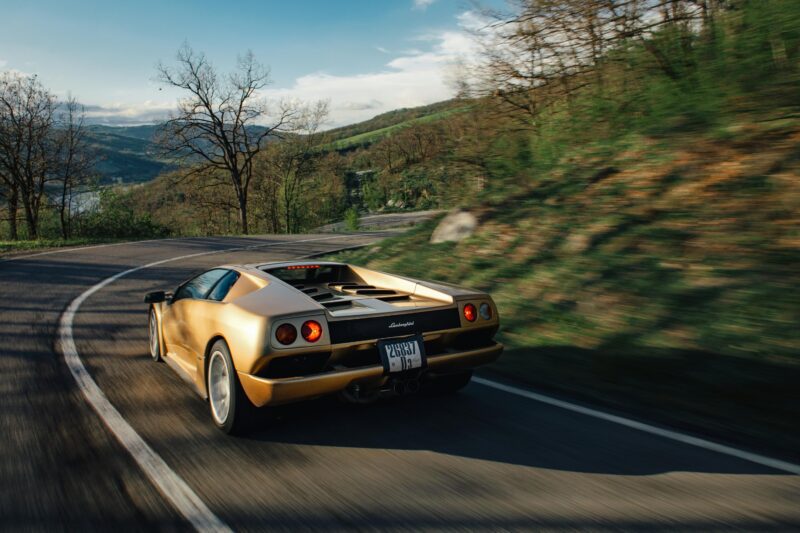
My first supercar experience as a journalist was in a Huracan Evo Spyder, and since then I’ve driven a Sterrato at full chat in deep sand, taken an Urus Performante up Pikes Peak, and more. These older cars represent a very different time in the company’s history, but having driven them in the place they were conceived and built, I very clearly see the throughline to those later cars and even to the new hybrid models like the Revuelto.
People may have been worried that Lamborghini would lose its character when it was purchased by Audi, but that hasn’t happened, and with unprecedented levels of financial stability and talented, passionate people at the helm, I’ve got no fear that the spirit that inhabits the 400 GT and the Diablo will ever truly disappear.



